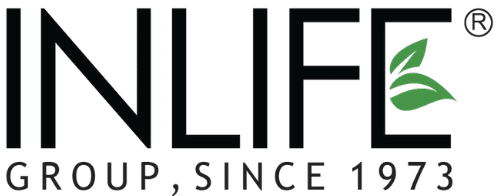Sports Nutriton, Weight Management
Diet for bariatic surgery pre and post operation
Bariatric surgery is an operation which helps you to lose weight by making changes to your digestive system. Some types of bariatric surgeries make your stomach smaller, allowing you to eat and drink less at one time and making you feel full sooner. Other bariatric surgeries also change your small intestine the part of your body that absorbs calories and nutrients from foods and beverages.

Types of Bariatric Surgery
There are four types of operations that are offered:
- Adjustable gastric banding (AGB)
- Roux-en-Y gastric bypass (RYGB)
- Biliopancreatic diversion with a duodenal switch (BPD-DS)
- Vertical sleeve gastrectomy (VSG).
Bariatric Pre-Op Diet
In most cases, bariatric patients will follow a liquid diet for a week or two leading up to surgery. While this diet may be difficult at times, the importance of staying on the pre-op diet cannot be overstated.
The purpose of this pre-op diet too is to reduce fat around the liver so that your surgeon can see and navigate your anatomy during the operation. Should you decide to violate the diet plan, surgery may be delayed or canceled intra-operatively (during the procedure).

The typical pre-op diet is high in protein and low in fat and carbohydrates. You will consume 70 to 120 grams of protein a day. Pre-op diet plans range from 800 to 1200 calories a day and will likely include the directions and foods below:
- If you smoke, quit now
- Avoid alcoholic beverages
- No sugary beverages
- No caffeinated or carbonated beverages
- Don’t binge eat
- Sip beverages and liquids slowly
- Do not drink with meals
- Wait at least 30 minutes after a meal before consuming any liquid
- Protein and meal replacement shakes will comprise the bulk of your pre-op diet
- Soup broth with no solids may be consumed
- Vegetable juice, but not fruit juice, is permitted
- Extremely thin cream of wheat or cream of rice can be eaten.
If your surgeon or practitioner approves, one or two daily servings of lean meat or vegetables may be allowed.
Bariatric Post-Op Diet
Once your operation has been performed, your stomach will need to heal. What and how you eat will be a determining factor in how well and how quickly you recover. Your post-op diet will prevent your stomach from stretching and putting undue stress on your body. It’ll also help you get used to eating smaller amounts, help with initial weight loss and help avoid side effects and complications from surgery.
The first five weeks after surgery will be the most vital and the most challenging. Your post-op diet will unfold in stages until you’re able to tolerate solid foods. Establishing a new, healthy diet will be integral to maintaining weight loss success throughout the rest of your life.
Stage 1 – Liquid Diet – 1 Week

Your provider will probably recommend and allow you to consume:
- Water
- Fat-free milk
- Fat-free broth
- Sugar-free jello
- Decaf tea or coffee
- Strained cream soup
- Unsweetened juice.
Stage 2 – Pureed Foods – 2 Weeks

During this stage, you will eat foods that have the consistency of a smooth paste or thick liquid. You’ll still want to consume high amounts of protein and the recommended daily 64 oz. of water. Multiple small meals throughout the day will be substituted for three larger meals, due to the diminished capacity of your post-surgery stomach.
- No caffeinated or carbonated drinks
- Protein shakes
- Egg whites
- Non-fat soft cheese
- Non-fat cottage cheese
- Soft fruits and cooked vegetables
- Puree or blend solid foods with one of these approved liquids:
- Water
- Skim milk
- Broth
- Juice with no sugar added.
Stage 3 – Soft Foods – 2 Weeks
Anything that can be easily mashed with a fork is considered a soft food, but that doesn’t mean you can eat whatever you want as long as it’s soft. Stage 3 continues the focus on lean, high-protein foods with the gradual introduction of more fruits and vegetables. Stage 3 diets often include:
- Lean chicken
- Lean turkey
- Fish
- Egg whites
- Non-fat cottage cheese
- Non-fat cheese
- Tofu
- Potatoes
- Carrots
- Green Beans
- Tomatoes
- Squash
- Cucumbers
- Bananas
- Avocados.
Stage 4 – Solid Foods
Once you’re able to tolerate soft foods, you may begin integrating firmer foods into your diet. You’ll want to chop or dice foods and start slowly to see how your body responds. It’s recommended that you only add one new food per day to accurately assess your body’s reaction. You may find that you have difficulty with dairy products or spicy foods.

Stage 4 carries over the high-protein requirements and daily intake of 64 oz. of water for proper hydration. During this stage, you’ll want to AVOID:
- Refined sugar
- High carbohydrate foods
- Nuts and seeds
- Popcorn
- Dried fruits
- Carbonated beverages
- Granola
- Fibrous vegetables like celery, broccoli, corn and cabbage
- Fried foods
- Bread and whole grains
- Beef
- Pork
- Shellfish
- Grapes
- Beans.
At each and every stage of this diet, you’ll want to keep a few things in mind. Be sure to eat and drink slowly, keep your meals small, drink plenty of water between meals, chew thoroughly, focus on high-protein foods and avoid foods with high fat and sugar content.


